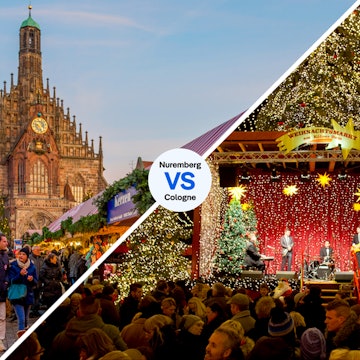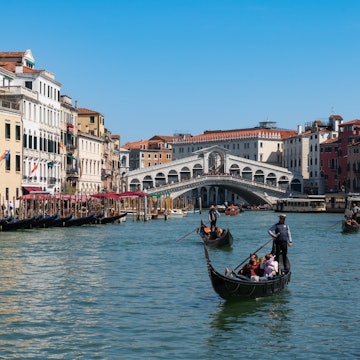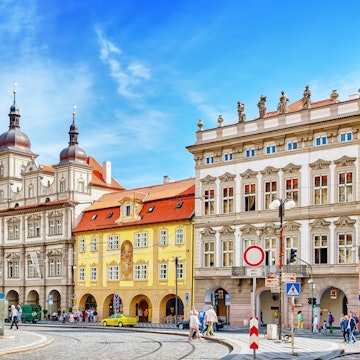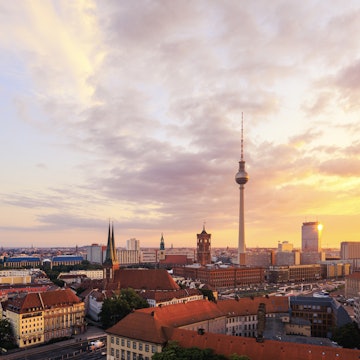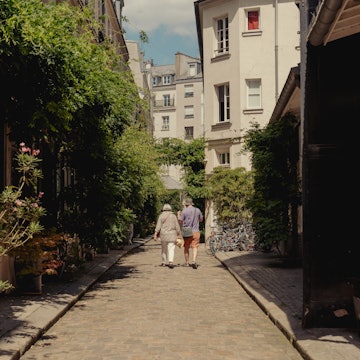

Konopiště Chateau. MondayMorning/Shutterstock
Czechia’s capital city is a fantastic sprawl of Gothic, Renaissance and baroque buildings that line both banks of the Vltava River. Millions come here every year to soak in the splendor of Prague's top sights, but with so many people milling about, the full flavor of the country itself can get lost.
The surrounding countryside holds some of Czechia’s most important sights, from a church made of human bones to the castle that once enshrined the Bohemian crown jewels. More importantly, leaving Prague's often heaving streets – even for a day – allows you to learn more about the Czech people and their culture and history. These are the top five excursions from Prague within a 90-minute radius of the city limits.

1. Visit one of Czechia's favorite castles at Karlštejn
Travel time: 45 to 90 minutes
How to travel: by train or car
Many Czechs regard Karlštejn Castle, a gleaming Disneyesque pile that rises dramatically beside the Berounka River, as their favorite – beating out even Prague’s own sprawling castle complex.
This massive walled structure traces its roots back to 1348 and the reign of Prague’s Holy Roman Emperor Charles IV. The building was originally conceived as a hiding place for the Bohemian crown jewels. Entry is by guided tour, so check availability and book tickets in advance.
After you’ve toured the castle, meander through pretty Karlštejn village, packed with pubs, or take a 15km (9-mile) hike through the woods to Beroun before catching a train back to Prague. Pod Dračí skálou offers decent Czech food and Pilsner Urquell beer on tap.
How to get to Karlštejn from Prague:
The 32km (20-mile) drive from Prague to Karlštejn takes almost an hour along the D5 (follow signs to Plzeň). Regular trains depart from Prague’s main station in the direction of Beroun; the trip takes up to 90 minutes.
2. Spook yourself at Kutná Hora
Travel time: 1 hour and 15 minutes
How to travel: by train, bus or car
Central Europe’s spookiest attraction lies an hour east of Prague at the Sedlec Ossuary, aka Bone Church, in the mining town of Kutná Hora. This macabre chapel was created by local wood-carver František Rint in the 1870s. He fashioned the bones from tens of thousands of human skeletons in the town crypt into chapels, crosses, chalices and monstrances.
Still, there's more than just old bones in Kutná Hora. The city grew wealthy in the 14th and 15th centuries as the center of silver mining for the kingdom of Bohemia. You can don a miner’s helmet and tour the old silver mines, then pay your respects at the gloriously Gothic Cathedral of St Barbara, the patron church of miners.
Once you’ve had your fill of bones and medieval finery, wet your whistle from the wide selection of local beer at Dačický.
How to get to Kutná Hora from Prague:
Kutná Hora is about 70km (44 miles) east of Prague, and the drive takes about an hour and 15 minutes. Buses leave throughout the day from Prague’s Háje station on metro line C (red), while direct trains depart from Prague’s main station; the journey times are about the same as by car.
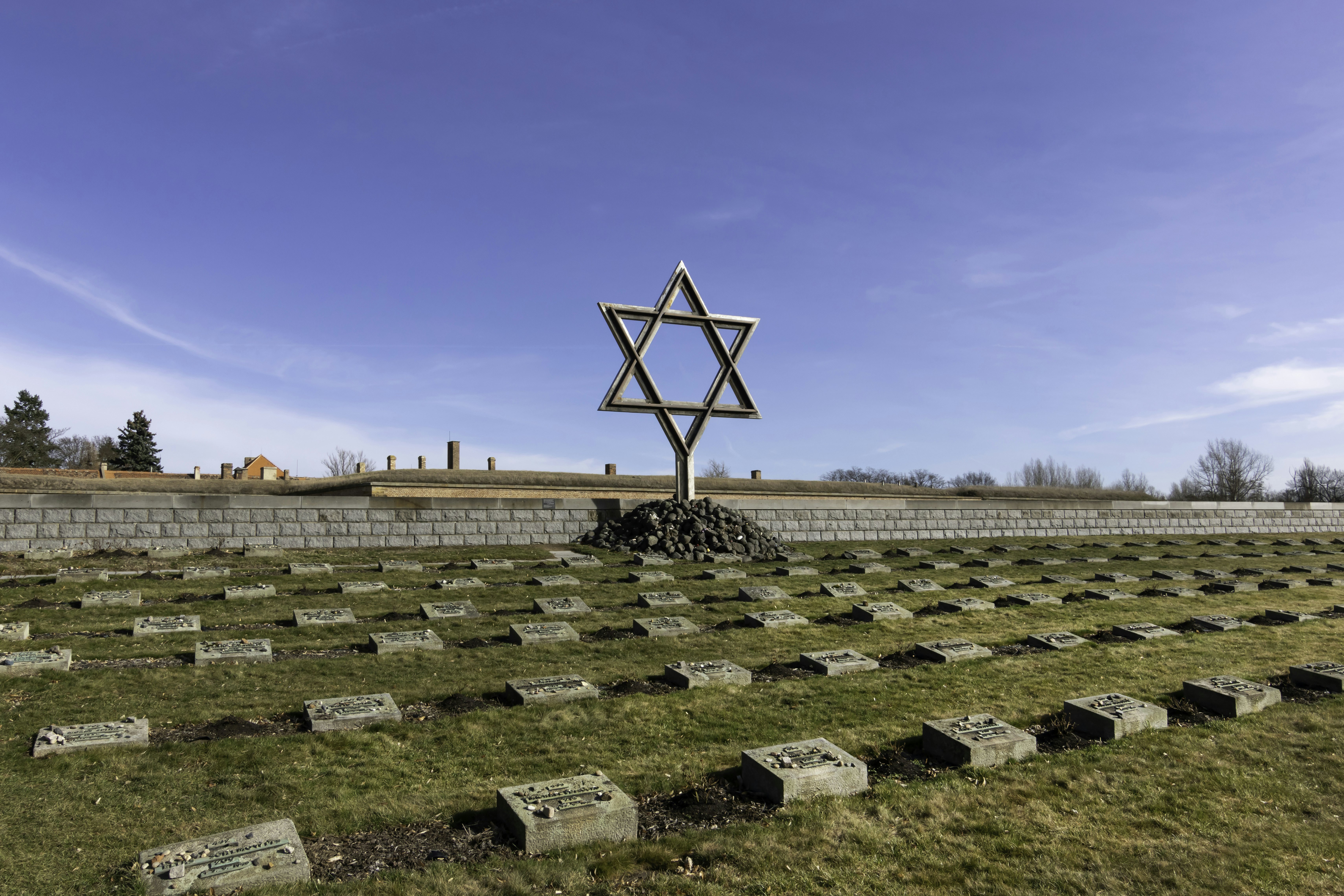
3. Learn the harrowing WWII history of Terezín
Travel time: 50 to 90 minutes
How to travel: by bus or car
The Theresienstadt Concentration Camp, at the former military fortress at Terezín, was the most notorious German-run concentration camp on Czech soil. It wasn’t a death camp, like Auschwitz-Birkenau: German Nazi Concentration and Extermination Camp in Poland, but a holding center for Jews and other Holocaust victims before they were sent onward to their deaths. Conditions were atrocious, and thousands died from hunger and disease.
The main Ghetto Museum is spread out over several buildings, and the permanent exhibitions explore both the daily lives of the prisoners and the way the Nazis used Terezín to deceive the International Red Cross.
Bring along a packed lunch, as Terezín is short on restaurants. Radniční sklípek in nearby Litoměřice offers the best food in the area but will require a car or bus to reach.
How to get to Terezín from Prague:
Terezín is around 60km (37 miles) north of Prague, and the drive takes less than an hour. Buses from Prague take about 90 minutes and depart from above the Praha-Holešovice metro station on line C (red).
4. See the home of Franz Ferdinand at Konopiště Chateau
Travel time: 1 hour
How to travel: by train, bus or car
Austrian Archduke Franz Ferdinand was one of the 20th century’s most fateful figures. His assassination in Sarajevo in 1914 triggered the bloodbath of WWI. What’s not widely known is that he lived not far from Prague at stately Konopiště Chateau.
A guided tour around the staterooms offers fascinating insight into how the wealthy lived in the early years of the 20th century and the archduke’s many eccentricities, which included hunting and the cult of St George. The chateau gardens make for a restful respite.
For a meal, head to Stará myslivna for old-fashioned Czech cooking with – true to the archduke’s passion – lots of game on the menu.
How to get to Konopiště Chateau from Prague:
Drivers follow the D1 motorway south from Prague to Benešov u Prahy, the closest town to Konopiště Chateau. Local buses run from here to the castle. Buses to Benešov travel throughout the day from Prague’s Roztyly station on metro line C (red). Alternatively, come by train from Prague’s main station. The journey takes about an hour.

5. Head to Plzeň – a haven for lovers of pilsner
Travel time: 60 to 90 minutes
How to travel: by train, bus or car
Modern lager – pilsner – was invented here in 1842, and town brewers have zealously preserved their beer’s storied heritage ever since. For fans of the amber liquid, a guided tour of the Pilsner Urquell Brewery is a pilgrimage. The tours are popular, so it’s best to buy tickets in advance. The Brewery Museum is also worth a look.
In keeping with the beer theme, sample some excellent pub grub. Na Spilce is situated on the brewery grounds, and tours end at its door; Na Parkánu is another popular pub-restaurant, situated next to the Brewery Museum.
Plzeň has other attractions too. The city’s extensive underground tunnels, used for both beer production and defense, are fascinating. Kids will love the Techmania Science Center. It’s a massive interactive science lab, with an infrared camera, magnets, a planetarium and other wonders.
How to get to Plzeň from Prague:
The city is easily reached by car, bus or train; the drive from Prague takes about 90 minutes. Buses run every half hour from Prague’s Zličín metro station on line B (yellow), while trains depart from Prague's main station.






